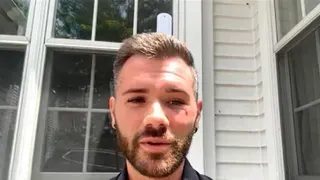January 25, 2017
Puerto Rico Tries to Open No-Man's-Land to Tourism
Danica Coto READ TIME: 3 MIN.
A small island long known as a Navy bombing range is gradually trying to turn a no-man's-land into a booming tourist mecca.
Vieques, off the east coast of Puerto Rico, boasts gorgeous beaches, turquoise waters and a stunning bioluminescent bay. But for more than 70 years, most of the island has been off-limits to non-military visitors. Tons of unexploded bombs, rockets and other munitions still lie scattered across the eastern half of the island and the surrounding seabed.
One side effect is that much of the island remains tantalizingly undeveloped, a wildlife refuge whose verdant hills and white-sand beaches attracts some 170 bird species and are popular nesting places for leatherback, hawksbill and green sea turtles.
"They're the bread and butter of Vieques," said Mike Barandiaran, manager of the Vieques National Wildlife Refuge for the U.S. Fish & Wildlife Service. "The tourist that comes here wants the wild, natural area. And it generates a lot of revenue." About 67,000 visitors came to the refuge last year, up from 24,000 in recent years.
The Naval Training Range shut down in 2001 and since then the U.S. Environmental Protection Agency has designated much of it as a Superfund site believed to contain contaminants including mercury, lead and napalm. The U.S. Navy has been working under orders to clean up as much of the place as possible to make it more hospitable for tourists and the more than 9,000 locals alike.
Many activists and Puerto Rico's health department argue that the years of exposure to dangerous substances have led to significantly higher rates of cancer and other health problems. Officials with the island's previous administration began a process to obtain as much as $1 billion in compensation for environmental damage, but it is unclear if the new administration will pursue that effort.
Federal studies have challenged those assertions and Dan Waddill, the Navy's Vieques restoration branch head, said the Navy has done extensive environmental sampling and air monitoring and has found no violations.
"We are very sensitive to the public's concerns about health, but all our work is done in a way that's protective of human health and the environment," he said.
The cleanup already has cost more than $220 million, and it's expected to extend for more than another decade. So far, crews on land have removed some 31,000 bombs, 1,300 rockets and 600 grenades among other items, some of which were practice rounds, Waddill said. Nobody's sure how much remains.
This year alone, the Navy plans to scour 19 square miles (49 square kilometers) of seabed to map areas containing unexploded ordnance to be removed by divers and robots - eventually opening new beaches and reefs to swimmers and divers.
Overall, some 11 square miles (28 square kilometers) of land in Vieques has been re-opened since the cleanup began, and officials hope eventually to open another 16 square miles (41 square kilometers), Barandiaran said. That would create an overall wilderness area about the size of Washington, D.C.
Barandiaran said another 2 square miles (5.2 square kilometers) will remain permanently closed to the public for safety reasons.
Tourism already has been growing in Vieques - a boon to the small population of which nearly half live below the poverty level. The island offers horseback riding, snorkeling adventures and trips to a popular bioluminescent bay, one of only a handful in the world.
The high-end W Retreat & Spa resort opened in northern Vieques in 2010, and a growing number of hotels, restaurants and vacation homes have opened since.
Tourists this year expect to get access to parts of a zone in western Vieques that once served as munition storage depot. Federal authorities said hunting will for the first time be allowed on Vieques at this site, adding that the 400 acres (162 hectares) also will offer hiking, biking, horse and bird-watching trails. That's encouraging news for Michigan tourist Michelle Brinker, who was visiting Vieques this month for the third time with her husband.
"We love this island, and it's nice to see areas like this opening up to the public," said Brinker, a 40-year-old pharmacist from Ann Arbor. "It would be nice to hike more in those restricted areas. You jog down there and you go, 'Oooh, I wonder what's in there.'"






